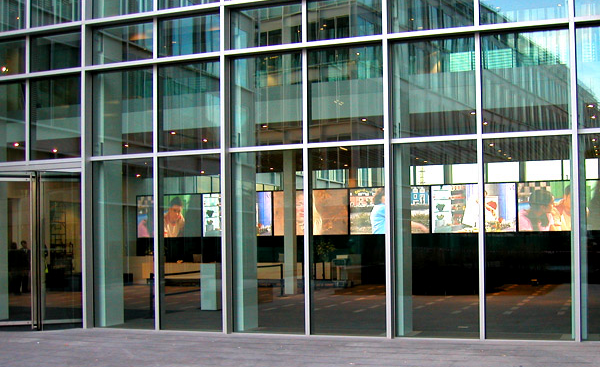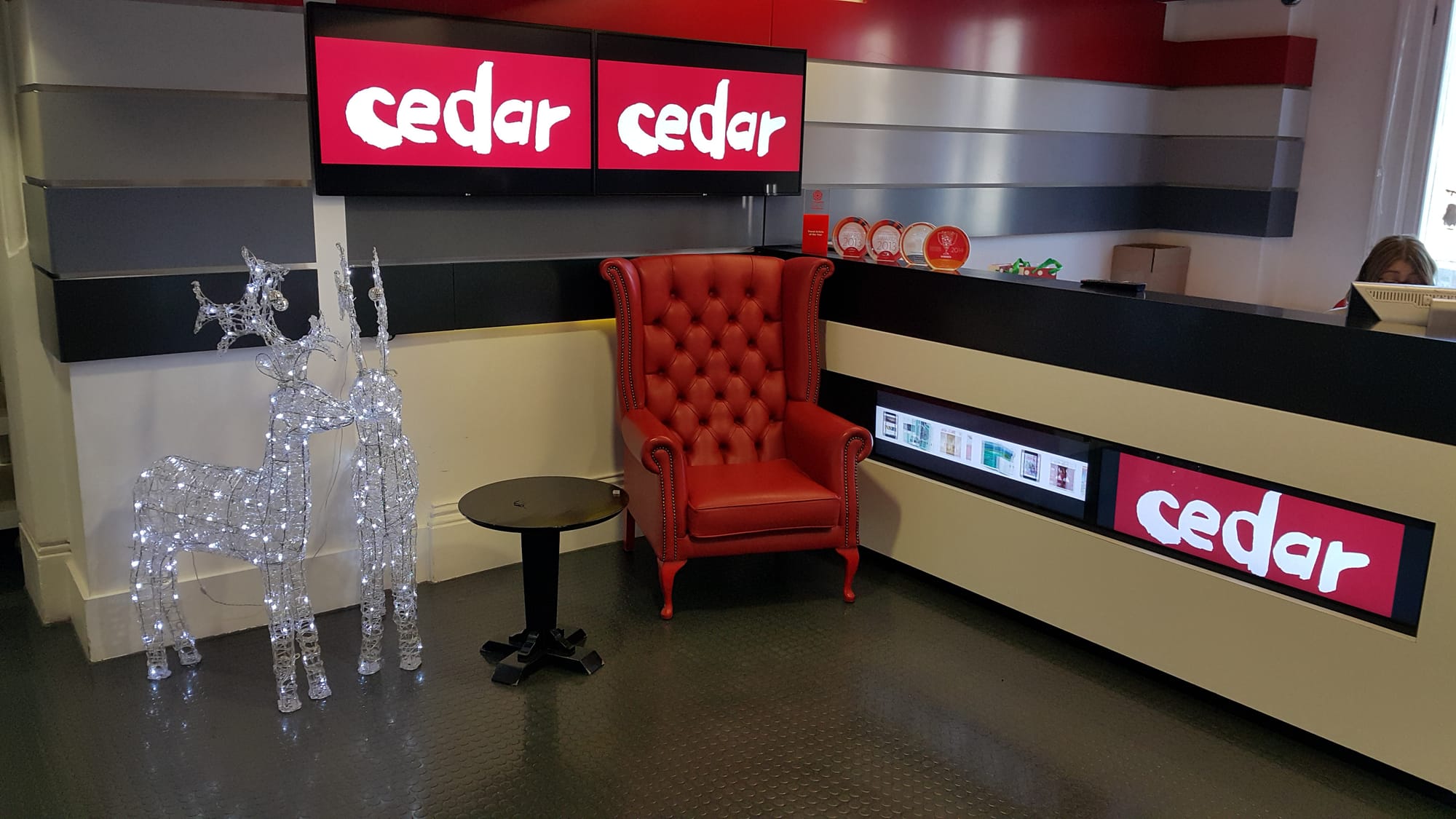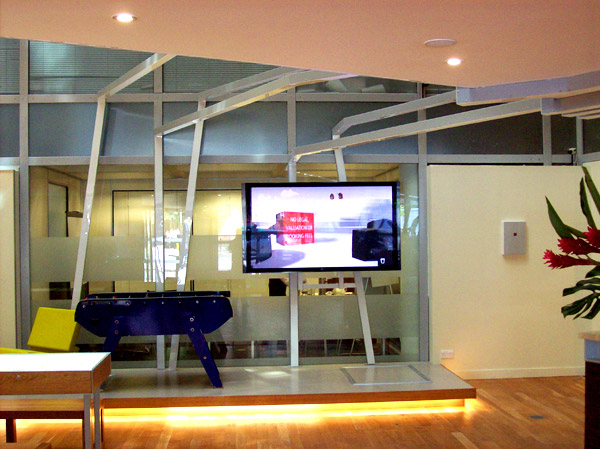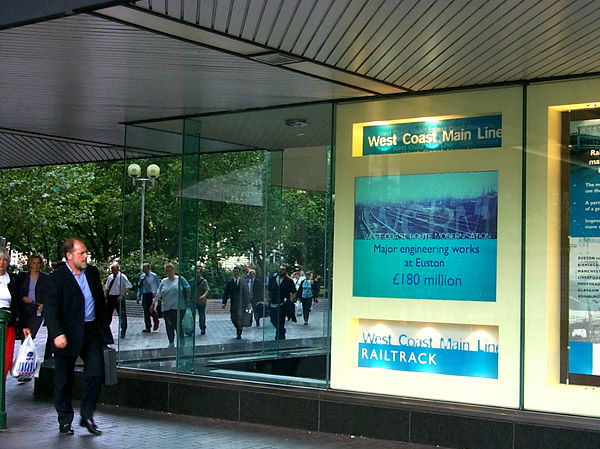Digital Signage

Have you been missing an opportunity to communicate with clients while they wait in your reception area or while on their way to your meeting room?
Are there important company messages that you need to communicate to staff, who could be observing a display in the call centre floor, the cafeteria or breakout areas?

Do you have a waiting area or cueing system where customers have to wait to be served? Perhaps a signage system that supplies them with anticipated waiting times and other information about their visit may improve the customer experience. Research suggests this is the case.
Or perhaps your restaurant would benefit from dynamic signage, showing off the products and adjusting in real time to what remains in stock or changed pricing depending on the time of day.
With the array of display technologies available today, and ever more sophisticated message delivery and scheduling systems, the ability to provide large, bright and sustainable dynamic digital images as a mass communication tool has been unprecedented.
Digital signage solutions might be used to produce colourful, moving, eye-catching displays for marketing or advertising purposes, but are often employed to disseminate real-time dynamically updatable details, such as travel schedules, weather, financial, or market information.

In these environmentally conscious times, many traditional print signage techniques have been deemed unsustainable due to the damage created through the chemical processes involved in their production and the difficulties in dealing with their waste. Digital signage is being hailed by many as more sustainable with less environmental impact for many of the large display applications.
Why Digital Signage?
Digital signage systems are employed to communicate with staff, customers or the general public and solutions can be tailored to the requirement be it for a single screen display in a lobby, reception area, or a store display, to a sophisticated multi-screen video wall, multi-message network across a single corporate office, global environment, or a retail, leisure or advertising application.

Before presenting a digital signage solution to a client, when deciding on the final hardware and software combination, integrated circles team will take into consideration factors such as the design life of the project, the running hours for the displays, the number of screens and geographical spread, the message content, the dynamic elements and frequency of updates, the size of the displays and the ambient conditions in which they will have to operate together with system security and integrity.